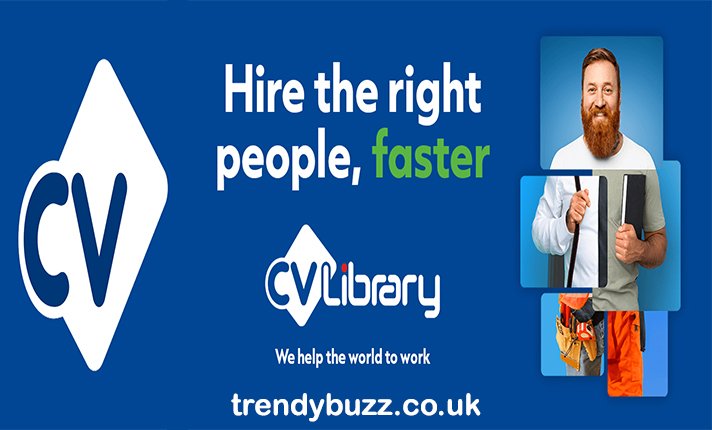Introduction
CV Library has been a steady presence in the UK recruitment landscape for more than two decades. Unlike flashier global platforms, it built its reputation on a deep CV database, practical tools for employers, and a simple, reliable experience for candidates. This article explains how the site works, why it matters, and how both jobseekers and hiring teams can use it effectively.
What CV Library offers
At its core, CV Library is a job board and CV database. Jobseekers can upload their CVs, create profiles, and set up job alerts tailored to role, location, and salary. Employers can post vacancies, search the CV database using keywords and filters, or purchase managed services for ongoing recruitment needs. The platform also produces data reports that help employers understand application trends and candidate expectations.
Why it stands out
Scale and focus are two of CV Library’s advantages. It concentrates on the UK market and collects a large number of CVs across sectors. That makes it especially useful for employers looking for volume in candidate searches, and for jobseekers who want broad exposure to recruiters. The site’s search tools and keyword matching help recruiters find candidates quickly, while job alerts and saved searches keep candidates informed about relevant openings.
How jobseekers should use it
Create a clear, focused CV. Use keywords that match your industry and the roles you want. Make your CV visible to employers, but review privacy settings if you’re currently employed and need discretion. Set targeted job alerts and check them regularly; alerts surface new roles early, which is useful when competition is tight. When applying, tailor your application to each role and include a concise cover note when possible — recruiters appreciate clarity.
How employers should use it
When posting roles, write precise job titles and informative descriptions. Include a salary range if you can: listings with clear pay information tend to attract higher-quality applications. Use the CV database to shortlist candidates, and take advantage of screening features like keyword filters and location radius searches. For high-volume hiring, consider the platform’s managed services or applicant tracking integrations to streamline workflow.
Data-driven features and reports
CV Library regularly publishes market insight that can be useful for recruitment planning. These reports cover candidate behaviour, such as how salary transparency affects application volumes and which job categories are most active. Recruiters who read and apply these insights often see better response rates and more effective hiring campaigns.
Practical tips for standing out
For candidates: keep your CV concise, list measurable achievements, and add role-specific keywords. For recruiters: make adverts skimmable, highlight must-have versus nice-to-have skills, and respond quickly to promising candidates. Fast responses and clear communication reduce drop-off during the application process.
Common limitations
Like any job board, CV Library’s effectiveness depends on the quality of the data it holds. Some CVs may be out of date or incomplete, and keyword searches can return false positives. Niche and senior roles sometimes perform better through targeted searches, headhunting, or specialist agencies. Employers should still use screening interviews and assessments to verify candidate fit.
Pricing and packages
CV Library offers a range of options from single job adverts to subscription plans and managed services. Pricing varies by job type, duration, and additional features such as CV searches. Small businesses can use pay-per-post options, while larger employers may find subscription or managed services more cost-effective.
Integration and technology
The platform integrates with common applicant tracking systems and recruitment tools, which helps teams manage candidate pipelines without manual data entry. These integrations also allow recruiters to enforce consistent workflows and monitor hiring metrics more easily.
Success stories and use cases
For many businesses, CV Library reliably fills entry-to-mid-level roles in volume. Retail, customer service, administration, and certain technical roles often see strong candidate flow. For candidates, regular use of alerts and profile optimization can lead to interviews within a few weeks, particularly in high-demand sectors.
Regulatory and privacy considerations
Candidates should be aware of data handling and privacy policies. CV Library allows control over CV visibility and provides options to anonymize personal details in searches. Employers should ensure compliance with data protection laws when storing candidate information and using search data for outreach.
Actionable checklist for jobseekers
• Update your CV headline and summary to reflect current goals. • Add keywords recruiters will search for. • Set up at least one targeted job alert.
Actionable checklist for recruiters
• Use clear job titles, list 3–5 core responsibilities, and separate must-haves from nice-to-haves. • Include a salary range and basic benefits. • Use Boolean keyword searches in the CV database for faster shortlisting. • Integrate postings with your applicant tracking system to automate workflow.
When to choose CV Library
Choose CV Library for UK-focused hiring where candidate volume matters. For highly specialised senior roles, pair it with niche recruiters or headhunting. For international and remote hiring, supplement with global boards.
Candidate experience matters
A smooth application flow, quick confirmations, and clear timelines improve conversion. Candidates who receive prompt communication are more likely to accept offers and recommend the employer.
Looking ahead
Job boards will keep mixing better data with automation. CV Library is likely to improve matching tools and employer analytics while keeping a simple candidate experience. Employers who combine data-led posting with swift outreach will have an advantage.
Closing thoughts
CV Library is a practical, UK-focused recruitment channel. It won’t replace careful screening, but it speeds discovery and broadens reach for many common roles. Use it as part of a balanced hiring strategy and refine your approach with data and timely follow-up and referrals.
